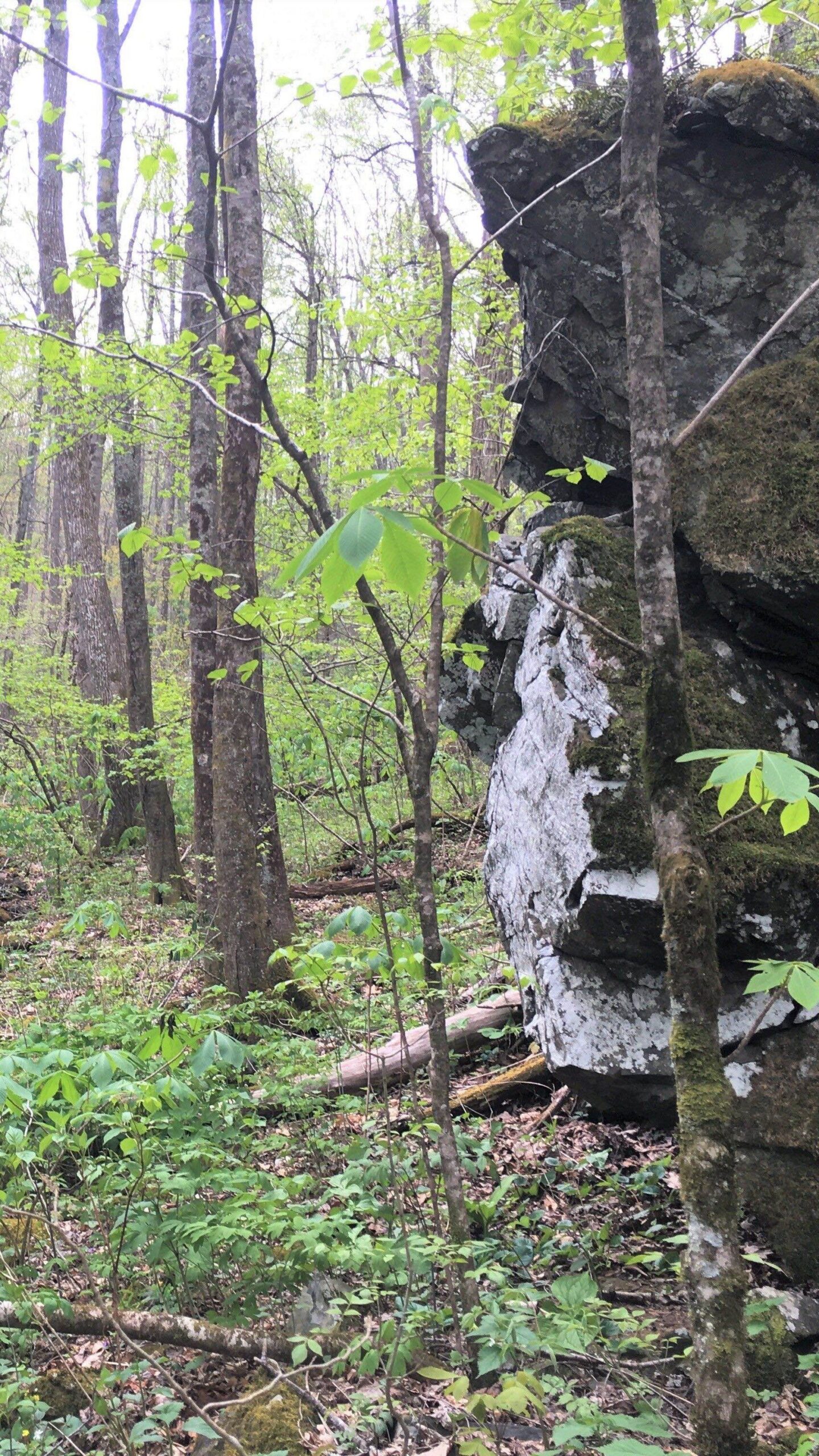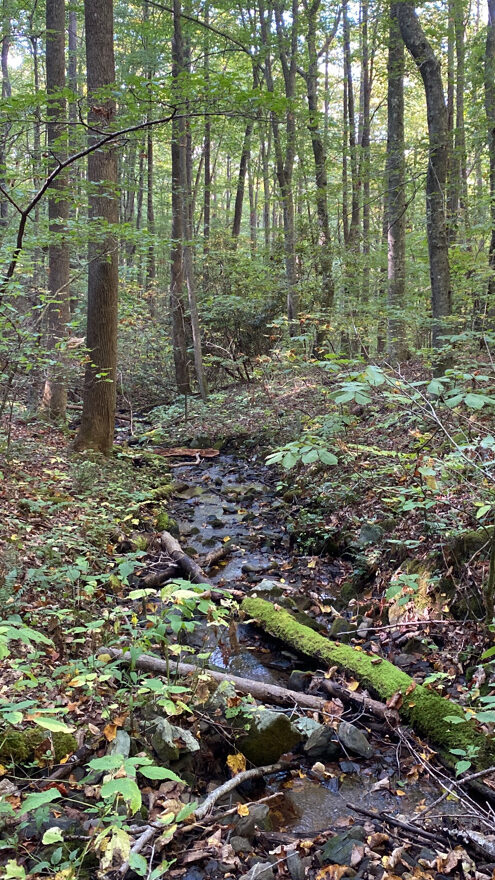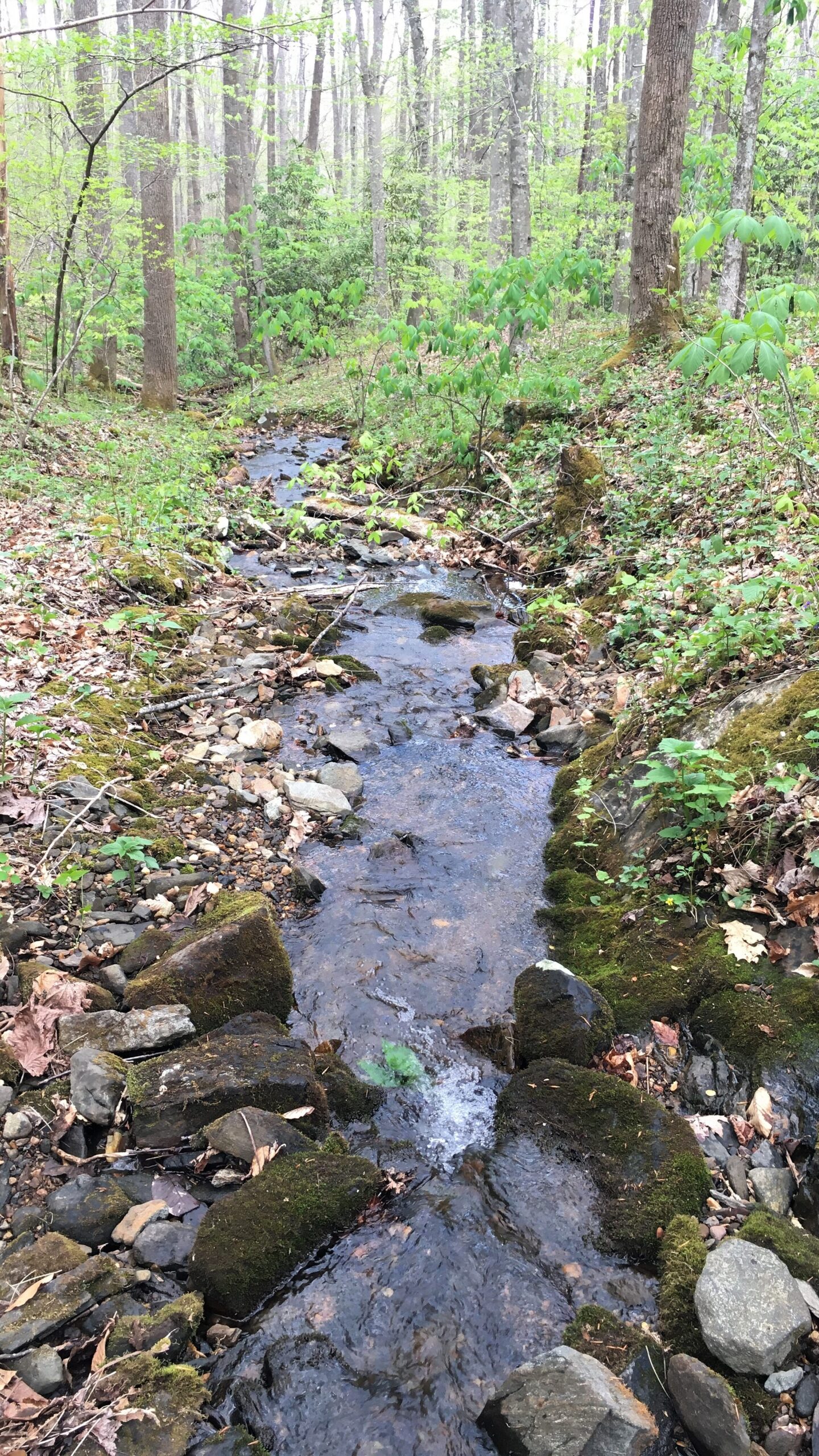Conservation Trust for North Carolina purchases 68-acre “Grassy Creek Springs” property for permanent protection.
In June, Conservation Trust for North Carolina purchased a unique 68-acre property including the majority of the “Grassy Creek Springs Natural Area,” recognized by the NC Natural Heritage Program for its ecological significance. The land adjoins the Blue Ridge Parkway at milepost 332 in southern Mitchell County and features natural springs and seeps, an abundance of spring wildflowers, and native forests that have been undisturbed for nearly a century. Positioned between Little Switzerland and the Museum of NC Minerals, the property protects views of mature forestland along a heavily traveled section of the Parkway.

“We are grateful to the landowners, our state funders, the Stanbacks, and to all of our donors and allies for helping us to secure this one-of-a-kind property,” stated Cynthia Satterfield, Executive Director of Conservation Trust for North Carolina. “We are also grateful for our long-standing partnership with the National Park Service and look forward to working with them to incorporate the Grassy Creek Springs property into the boundaries of the Blue Ridge Parkway in the near future.”



CTNC was fortunate to work with sellers who were committed to ensuring the property’s protection in an area popular for second-home development and destructive mining and timber operations. The landowners generously agreed to sell the property at below market price in a transaction referred to as a ‘bargain sale,’ reducing the funds CTNC needed to raise for the purchase. Public funding was secured from the NC Land and Water Fund and the NC Environmental Enhancement Grants Program. Private donations from Fred and Alice Stanback of Salisbury, NC, and many other individuals from across the state also helped make the purchase possible.


The purchase forever protects scenic views from the Parkway and nearby Mountains-to-Sea Trail, safeguards clean water, reduces the risk of flooding, provides a haven for plants and wildlife, and enables the forest to continue sequestering carbon from the atmosphere.


